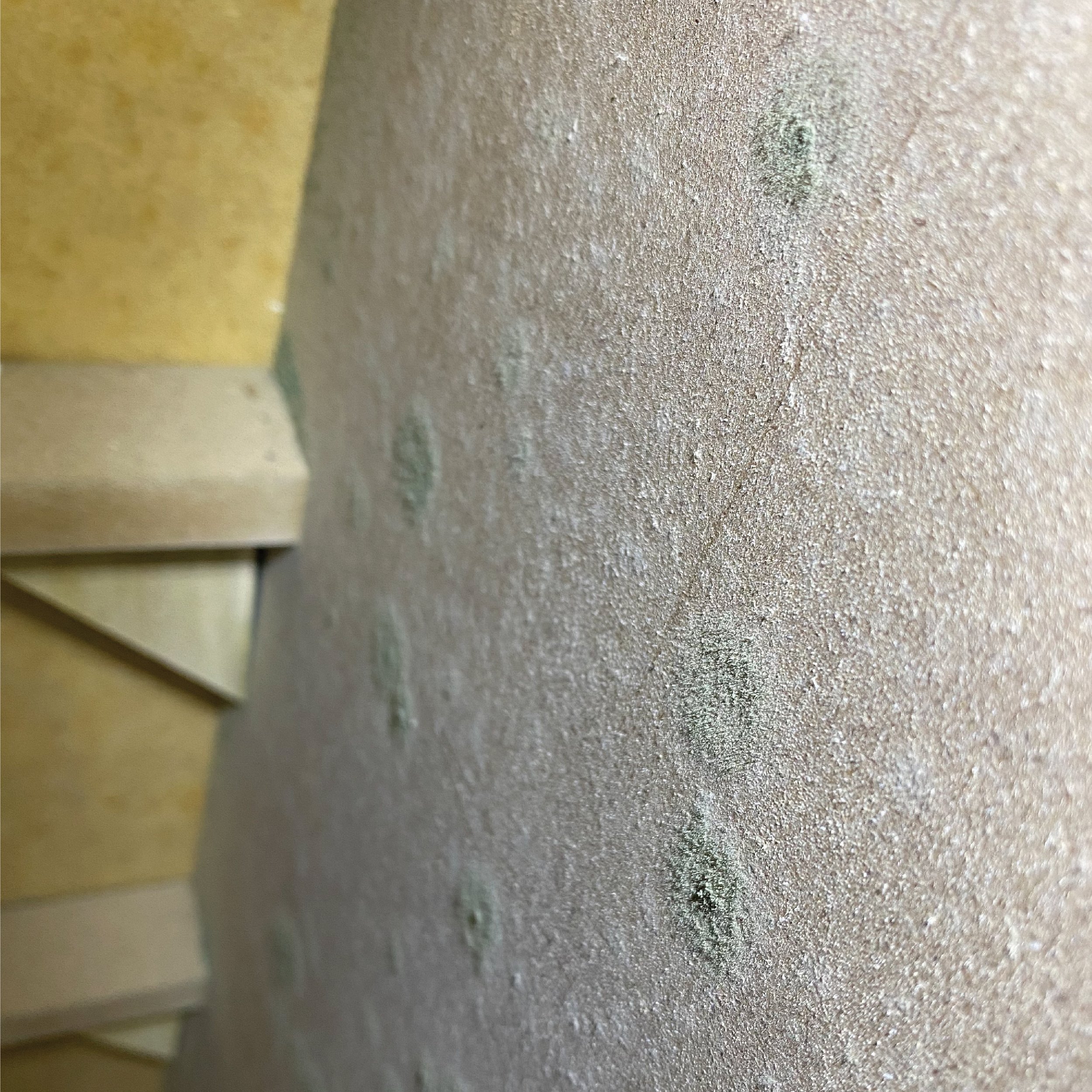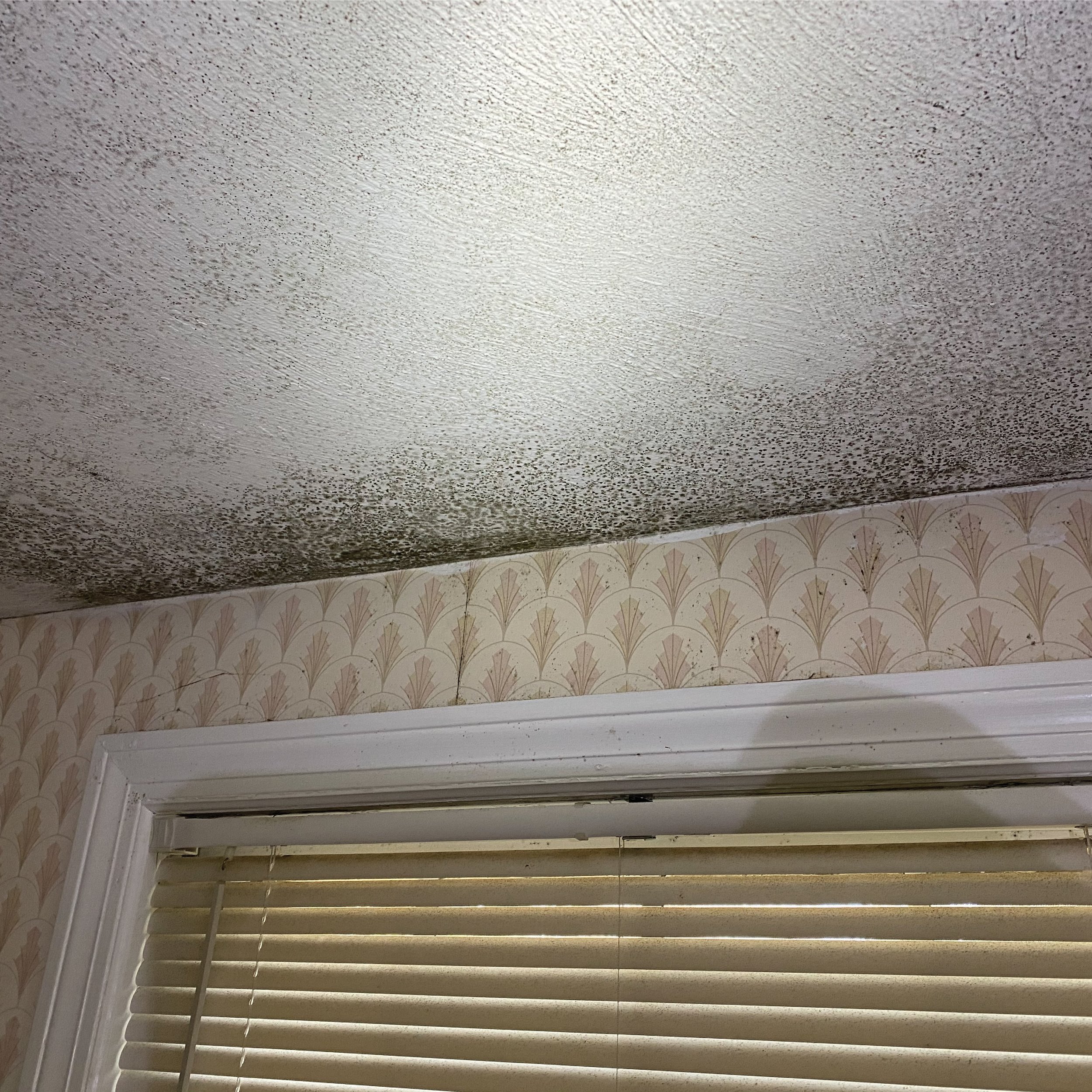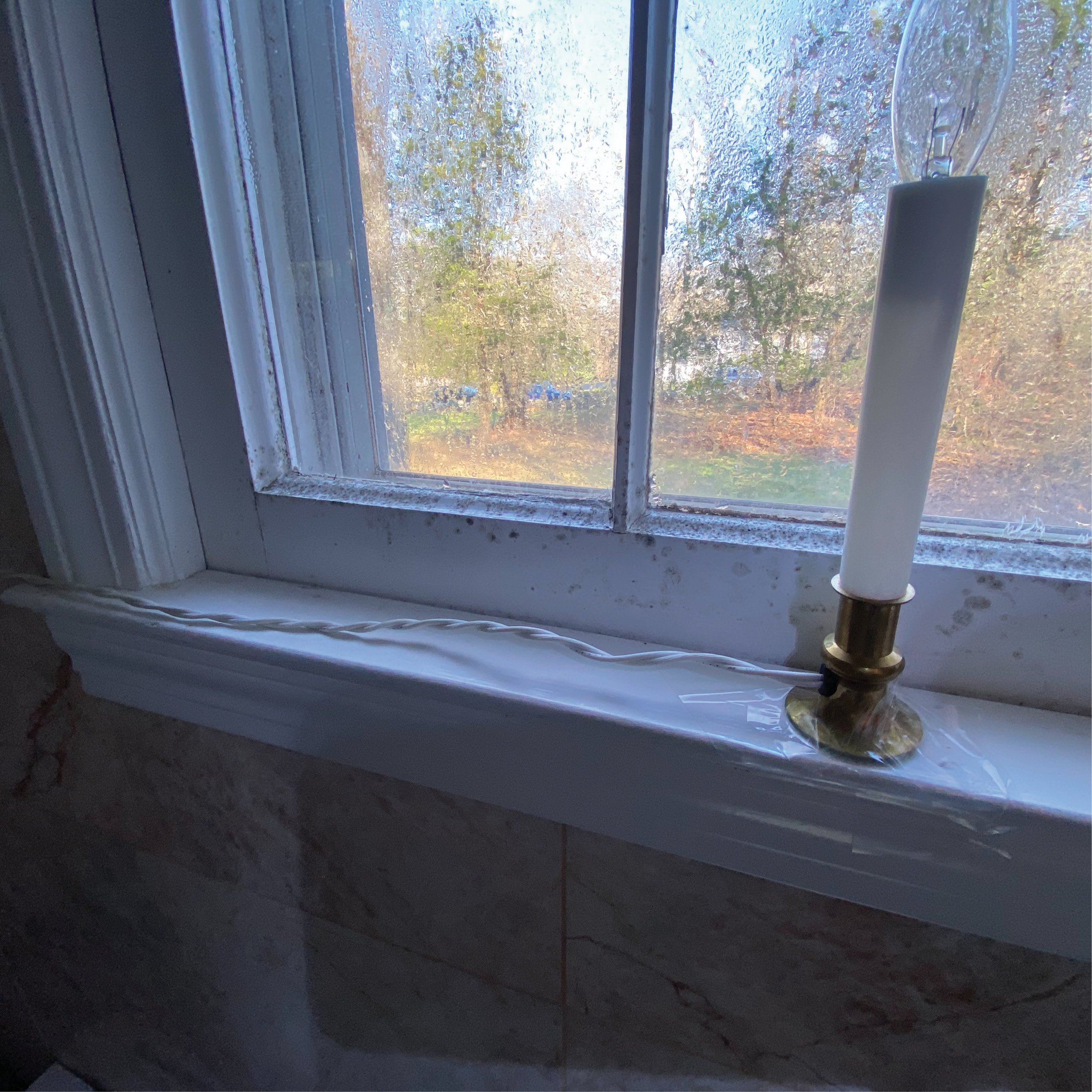Bathroom Fan Failure
Background
The property owner had been renting a 4000 sq/ft home to a family of 6 for approximately 11 months. The second floor has two full bathrooms. One bathroom was unable to be used for showering due to plumbing issues and renovations. The 6 residents utilized only the primary bathroom for daily showers without reporting to the property owner that the bathroom exhaust fan had not been functioning properly.
Issues
Primary Bathroom: Without proper ventilation in the bathroom, excessive moisture was retained in the confined space leading to intense mold growth on all surfaces.
Attic: It was also discovered that in addition to the fan not functioning, the fan was not venting to the exterior of the home. Through natural convection, moisture was drawn up from the warm bathroom into the attic. Condensation collected on roof joists and sheathing, contributing to mold growth across the attic.
Primary Bedroom: Moist air from showering flowed from the bathroom into the bedroom after shower usage and condensed on old single pane windows. Mold growth formed around the windows, where the wall met the ceiling, and on furniture in close proximity.
Steps Taken
We began by segregating the work areas from the rest of the home by sealing doorways. Air scrubbers were set up to capture any airborne contaminants and anything that may have been stirred up in the cleaning process. In all areas, HEPA vacuuming was performed on finished surfaces, fabric furniture as well as directly on any thick mold growth.
In the attic, we sprayed all unfinished wood surfaces with a mixture of high strength hydrogen peroxide and a stain fighting additive. This works to kill any mold and biological matter, as well as removing the majority of organic staining, returning the surfaces to a “like-new” brightness. We then fogged an all-natural blend of essential oils and biologicals which consume any remaining mold, bacteria, viruses and allergens and penetrate construction materials, nooks and crannies for a thorough disinfection.
For the bedroom and bathroom, we used a variety of solutions. Dilute hydrogen peroxide was applied to heavily stained tiles and painted walls. An all-natural surface cleaner was used to wipe down all furniture and remaining finished surfaces. Finally, the area was fogged with the same mold killing fog that was used in the attic.
Finally, recommendations and next-steps were provided to prevent any further issues in the future. Remember that there is no magical solution that will prevent mold from coming back in the future. The environment needs to be one that isn’t hospitable to mold growth. That typically means controlling moisture in the space.
BEFORE
AFTER







